[unable to retrieve full-text content]
William F. Buckley Communicators Workshop: Sign Up National Reviewfrom "workshop" - Google News https://ift.tt/LlGfT7O
via IFTTT
[unable to retrieve full-text content]
William F. Buckley Communicators Workshop: Sign Up National Review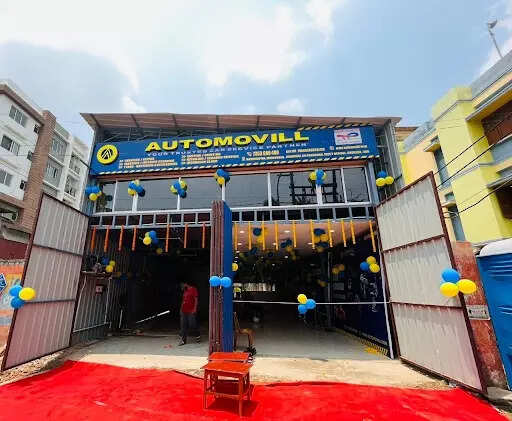
As the landscape of online players in the aftersales ecosystem evolves, Automovill recognizes the importance of establishing centralized hubs in every city. Spanning over 10,000 square feet with 8 bays and state-of-the-art equipment, the Kolkata workshop serves as a model for the company’s future expansion plans, with 10 more workshops planned across India.
With a focus on electric vehicle (EV) fleet maintenance and insurance claim facilitation/renewal, the workshop offers charging infrastructure to ensure vehicles are charged while repairs are carried out or awaiting insurance approval. Additionally, it provides a centralized claim handling facility, meeting the demands of businesses in the city.The workshop’s launch aligns with Automovill’s goals of brand building, city-based profitability, attracting new business, and catering to the increasing demand for EV fleets.
MriduMahendra Das, co-founder and CEO of Automovill, said, “We are elated to introduce our state-of-the-art workshop in Kolkata, a significant step towards strengthening our presence in the East. While we have established workshops before, this endeavour surpasses anything we’ve undertaken in terms of scale and magnitude. It promises not only increased profitability and additional revenue but also the reinforcement of valuable partnerships with B2B enterprises and insurance claim providers. We are confident that our workshop’s advanced infrastructure and skilled technicians will provide unmatched experiences to our valued customers in Kolkata”
Automovill has set ambitious targets following the launch of the workshop. In the first month alone, the company aims to serve over 100 B2C retail customers, handle more than 150 commercial EVs, and provide services to 25 insurance vehicles. With a strong commitment to delivering a comprehensive and high-quality experience, Automovill made a significant investment of over 20 lakhs in establishing the workshop in Kolkata. This investment not only covers the workshop facility but also extends to the provision of washing and detailing services, further enhancing the overall customer experience.
Pottery workshops like those at the Watershed Center for Ceramic Arts in Maine are filling up with people who want to connect with others instead of screens.
The challenge: Make 10 small clay objects in 18 minutes — one minute each for the first five pieces, two minutes for the next four and five for the last one.
Ariela Kuh, a ceramic artist with a bright demeanor and a yellow apron, set a timer on her iPhone as she explained the drill to the 14 of us attending her workshop last month at the Watershed Center for Ceramic Arts in Newcastle, Maine.
“Remember what it was like to touch clay as a kid,” she advised.
As I prepared 10 tangerine-size balls of clay, images from childhood flashed through my mind: the blue shelves at my after-school pottery program, the bulbous terra-cotta vase my mom made at one of the countless cancer facilities in the months before her death, the small elephant at the center of a red ceramic plate that my tiny hands had formed sometime in the mid-1990s and was now collecting dust.
“Go,” Ms. Kuh said, and there was no more time for thinking. Clay shapes appeared and multiplied, each maintaining a vague resemblance to the previous one, like snapshots of sea creatures undergoing evolution, all shells and tentacles. By the time the final phone alarm blared, I was giddy with the uninhibited joy you experience when letting go of perfectionism.
“Clay is the opposite of the cellphone,” said D. Wayne Higby, an artist and the director of Ceramic Art Museum at Alfred University in Alfred, N.Y. “This stuff is real, takes up space, it’s dirty. There’s just this physicality that is very different from what we experience six or eight hours a day sitting in front of a computer.”
This might partly explain pottery’s recent resurgence in popularity.
Clay educators, artists and industry experts from across the United States told me of people flocking to pottery classes and workshops, studios trying to get a handle on expanding wait lists, and ceramists racking up huge online followings. (There is even a television show for aficionados of the craft: “The Great Pottery Throw Down,” a production à la “The Great British Baking Show,” streaming on Max.)
And maybe because it provides a tactile alternative to the flattened reality of the screen, clay kept drawing in new devotees even as much of the world ground to a halt during Covid lockdowns.
“Pottery wheel sales doubled and tripled during the pandemic,” said Bryan Vansell, the owner and president of the Laguna Clay Company, a leading provider of clays, glazes and equipment for ceramists in the United States. “The pandemic brought people back home, put people into their garages and offices, spaces to make into studios.”
Now, many of those potters are looking to share their passion, and get their hands dirty, with others at summer residencies, classes and workshops at places like Watershed.
“Our programs all fill, they sell out, and we’d love to do more,” said the center’s director, Liz Seaton, who uses gender-neutral pronouns. A lawyer by training, they recently left their job as the policy director at the National L.G.B.T.Q. Task Force in Washington to turn their lifelong passion for pottery into a career. “I like to build things. One of the reasons I took this job was the challenge of taking this organization to a point where we have year-round facilities.”
Watershed was founded in the mid-1980s on the site of a defunct brickyard. Its 54 acres of rolling hills quickly became a haven where potters could deepen their understanding of the medium, and one another. During the height of the H.I.V./AIDS crisis in the 1990s, Watershed invited people living with the virus to explore the creative and therapeutic potential of clay.
In my own search for the magic that happens when earth meets water, I had left behind my pottery studio on the Upper East Side of Manhattan for a long weekend at Watershed, along a section of coastline where fingers of land seem to grasp the ocean.
Off a stretch of U.S. 1 littered with signs for pottery shops, I turned onto a country road on a crisp spring morning. I was greeted by the sight of a dappled pig chasing after birds, ears flapping in the sun, on the family-run farm next to Watershed. Sheep and their lambs were baaing, and a herd of brown cows gazed at my car.
The timeless beauty of its bucolic setting did not betray the transformation the center had recently undergone.
In a clearing in the woods, the old wooden chicken barn, which served as the pottery studio until 2020, had given way to a sparkling, corrugated metal building: Watershed’s new state-of-the-art ceramics facility. It was equipped with 35 work tables, numerous electric potter’s wheels and a glaze-spraying station, as well as sophisticated water- and air-filtration systems. An adjacent shed contained six kinds of kilns — including electric, gas and wood. Nearby, several modern cabins — cubist and gray, quietly hiding between the trees — had sprung up to serve as lodging for program participants.
Watershed currently hosts artist residencies, professional development programming for teachers, and public workshops. Operations have historically slowed down during the winter months, but with the inauguration of its new, winterized spaces and the construction of a remodeled commons building to begin later this year, it is solidly on the path to Mx. Seaton’s dream of a year-round operation.
“I like some organic wonkiness,” said Ms. Kuh as she freehanded a rectangle out of a sheet of clay and seemingly effortlessly curled the piece into a cylinder, then did the same with a circle, turning it into a cone. “I’m not a rule follower. There’s a reason I didn’t become a woodworker.”
The three-day class I was attending focused on how to build geometric objects from slabs of clay and then use those to assemble more intricate creations. Unlike wheel-throwing — where clay is molded on a spinning disk — this technique, known as hand-building, can be used to make a wide variety of forms and larger works.
As we broke into 25-pound bags of clay, the room filled with the smell of damp soil and a studious silence, punctuated occasionally by the sound of hands slapping and dropping the material to give it the right texture.
A sign proclaimed the studio a no-cellphone zone, and there were no clocks. As I bent, squeezed and smudged the gray dough in my hands, a smooth and cool sensation spread from the tips of my fingers to my head, pooling there, then drowning out anxieties and washing away my sense of time. Shapes of clay morphed on the canvas-covered work tables, and trapezoids of sun crept across the polished cement floors.
Watershed is far from the only place in the United States where potters can experience the fresh country air while exploring the craft and its traditions.
Founded in 1929 to give Appalachian women a means of earning a living, the Penland School of Craft in the Blue Ridge Mountains of North Carolina — where clay was designated the “official state art medium” in 2013 — draws artists and hobbyists with a range of programs in different media. Summer clay workshops generally last between four and 12 days, during which participants live on the 420-acre campus, and focus on a range of functional and decorative aspects of pottery.
A three-hour drive east, the town of Seagrove, which has one of the highest concentrations of working potters in the country, advertises itself as America’s pottery capital. The area is home to more than 50 pottery shops, studios and galleries as well as the North Carolina Pottery Center, a museum dedicated to the craft. Among its residents, Seagrove counts eighth- and ninth-generation potters, as well as a growing number of young apprentices and clay artists.
Tipping the scale from the utilitarian to the artful has long been the mission of the Archie Bray Foundation for the Ceramic Arts, in the foothills near Helena, Mont. Nearly three-quarters of a century after the Bray was founded, the world appears ready for its contemporary take on clay.
“Somewhere in the pandemic,” said the foundation’s current director, Rebecca Harvey, “whatever that hierarchy was, whatever that boundary between art and craft was, seems to have just evaporated.” She pointed to the expanding number of artists, galleries and museums — among them, the Metropolitan Museum of Art — that in recent years have started to embrace clay work.
For those interested in exploring, the Bray offers two-hour experience classes open to the public in July and August. Pieces are fired at the end of each class and ready for pickup two weeks later. Starting in 2024, there will also be short-term workshops year-round. Artist residencies and symposium-style programming are ongoing.
Helena is home to a lively ceramics community. Each summer, local artists open their studios during the two-day Montana Clay Tour. On June 14, the local Blackfoot River Brewing Company will have a celebration and a special “Bray beer” on tap to kick off the weekend.
Ms. Kuh was trimming away the excess material from a vessel reminiscent of an oversize dumpling, slowly imbuing it with the delicacy of a curtain fluttering in the spring breeze.
It was the last day at the workshop, and she was going over the finishing touches.
“Everyone has a different favorite part of the process. I really love this refining part,” she said, shaving off ribbon after ribbon of drying clay. “It’s like in writing, I like the editing part.”
Because of how long firing ceramics takes, we would not be putting raw clay pieces, known as greenware, in the kiln, but wrapping them to transport home.
Having flown to Maine and knowing this type of clay would melt in the high-temperature kilns at my studio in New York, I realized early on that my pieces would not be returning with me. The thought was weirdly freeing.
Like many hobby ceramists, I had been drawn to pottery because of the sense of purpose it gave me: making planters for my friends, bowls for my family, a little cave for my fish, knickknacks for my girlfriend.
I looked at the objects in front of me. One resembled a muscular set of shoulders with a long and skinny neck; the other reminded me of a volcanic hillside or tubular coral reef. What use would I possibly have for them?
Maybe they could be vases or lamps. Or perhaps their sole function was to bring me closer to the joy of playing I had so rarely felt since childhood.
And why shouldn’t that be purpose enough, I thought, as I dropped my creations into the reclaim bin, where scraps of clay go to await their next adventure.
Follow New York Times Travel on Instagram and sign up for our weekly Travel Dispatch newsletter to get expert tips on traveling smarter and inspiration for your next vacation. Dreaming up a future getaway or just armchair traveling? Check out our 52 Places to Go in 2023.

Archaeologists in Egypt have discovered two human and animal embalming workshops, as well as two tombs, in the Saqqara Necropolis south of Cairo, the government said on Saturday.
Located at the ancient Egyptian capital Memphis, the vast burial site is a UNESCO World Heritage Site and home to more than a dozen pyramids, animal graves and old Coptic Christian monasteries.
Mostafa Waziri, head of Egypt’s Supreme Council of Antiquities, told reporters the embalming workshops, where humans and animals were mummified, “date back to the 30th dynasty” which reigned about 2,400 years ago.
Researchers “found several rooms equipped with stony beds where the deceased lay down for mummification”, Egypt’s Ministry of Tourism and Antiquities said.
Each bed ended in gutters to facilitate the mummification process, with a collection of clay pots nearby to hold entrails and organs, as well as a collection of instruments and ritual vessels.
Early studies of one workshop suggest it was used for the “mummification of sacred animals”.
The discovery also includes the tombs of two priests dating back to the 24th and 14th centuries BC, respectively.
The first belonged to Ne Hesut Ba, who served the Fifth Dynasty as the head of scribes and priest of the Gods Horus and Maat.
The tomb walls are decorated with depictions of “daily life, agriculture and hunting scenes”, said Mohamed Youssef, director of the Saqqara archaeological site.
The second tomb, that of a priest named Men Kheber, was carved in rock and features depictions of the deceased himself on the tomb walls, as well as in a 1 metre-long (3-foot) alabaster statue, Youssef told reporters.
Egypt has unveiled a string of significant archaeological discoveries in recent years.
Critics say the flurry of excavations has prioritised finds shown to grab media attention over hard academic research.
The discoveries have been a key component of Egypt’s attempts to revive its vital tourism industry amid a severe economic crisis.
The government recently launched a strategy “aiming for a rapid increase in inbound tourism” at a rate of 25 to 30 percent a year, Tourism and Antiquities Minister Ahmed Issa said at the site on Saturday.
Egypt aims to draw in 30 million tourists a year by 2028, up from 13 million before the COVID pandemic.
The crowning jewel of the government’s strategy is the long-delayed inauguration of the Grand Egyptian Museum at the foot of the Pyramids of Giza.
Egypt has announced the discovery of two of the largest workshops ever used to mummify human and animal corpses in ancient times.
Two workshops and two tombs were discovered in Saqqara, a vast Pharaonic necropolis south of Cairo, according to Mostafa Waziri, the secretary-general of Egypt’s Supreme Council of Antiquities.
“Today, we announce the discovery of the two biggest mummification workshops for humans and animals at the Saqqara Necropolis. This workshop is the one used for humans, including the beds on which the bodies were washed,” Waziri told journalists in Giza over the weekend.
The embalming workshops date back to the 30th Dynasty (380-343 BC) and the Ptolemaic period (305-30 BC), Egyptian state newspaper, Al-Ahram reported Saturday, citing Waziri.
The first workshop is a rectangular building containing multiple rooms with stone beds measuring 2 meters (6.6 feet) long and 50 centimeters (20 inches) wide which were used to mummify the deceased, according to Al-Ahram.
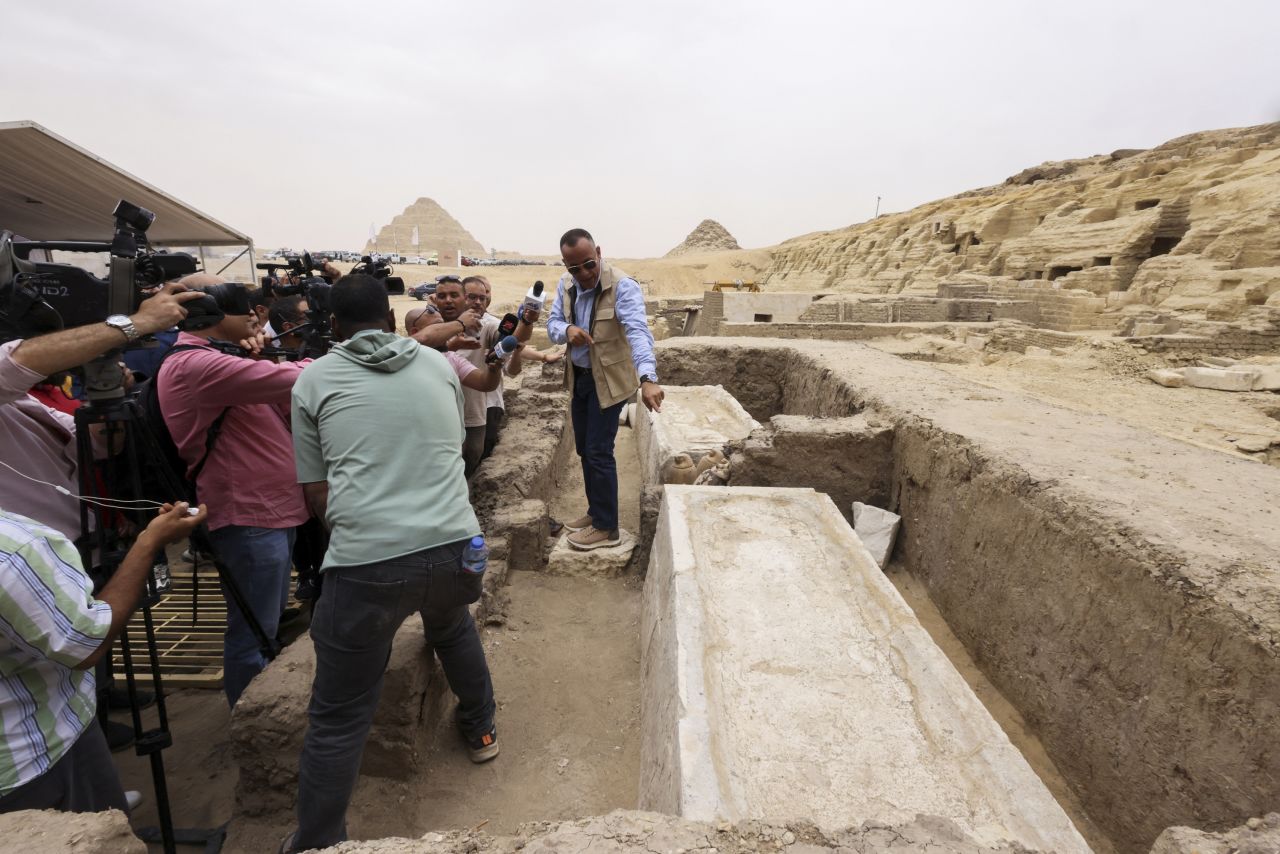
Archaeologists unearthed tools used by ancient Egyptians to dissect bodies to remove internal organs alongside the canopic jars used to preserve internal organs, Waziri said.
Archaeologists also found clay pots and animal burials in the second workshop. According to Al-Ahram, this workshop contained “five stone beds, distinct from those discovered in the human embalming workshop.”
“According to initial studies, it is believed that this particular workshop was used for the mummification of sacred animals,” Waziri said, according to Al-Ahram.
Alongside the two workshops, archaeologists also came across “one of the most beautiful tombs” in the necropolis, according to Waziri. Named after top official, Ne Hesut Ba, the tomb is 4,400 years old and dates back to the fifth dynasty, Waziri said.
Ne Hesut Ba worked as a high priest for the Goddess Maat and supervised the digging of the canals for irrigation, Waziri said, hailing his tomb as an “important” one.
The second tomb is 3,400 years old and belonged to a Qadish priest named Men Kheber Ra, according to Waziri.
In January 2021, archaeologists uncovered a plethora of ancient treasures in Saqqara, including ancient coffins, burial sites and a funeral temple.

During a press conference Saturday in Saqqara, Egypt’s Minister of Tourism and Antiquities, Ahmed Issa outlined the pivotal role the site is playing in the Egyptian government’s plan to bolster the economy through tourism.
According to Al-Ahram, Issa explained the extensive work being carried out to develop Saqqara as a tourism hub, as part of broader plans to increase tourism to Egypt by 25% to 30% in 2023.
Issa paid tribute to the “hard work” of archaeologists who “revealed this new discovery,” Al-Ahram reported.
“I assure you that Egypt, especially the archaeological site of Saqqara, has not yet revealed all its secrets and there are many more to come,” the minister added.
Egyptian archaeologists have uncovered “the largest and most complete” human and animal mummification workshops ever found at a site near Cairo.
The workshop, which dates from the 30th Dynasty and the early Ptolemaic era (4th century BC), was found near Djoser's Step Pyramid, the oldest stone pyramid.
"Two stone beds for human embalming were found in a number of rooms. The beds were approximately two metres long and one metre wide. They were made of stone blocks and covered with a layer of mortar that sloped down to a gutter," said Mostafa Waziri, secretary general of Egypt’s supreme council of antiquities.
"The mummification beds were used to prepare the body by extracting the human organs, which were placed in canopic jars that were discovered."
The human mummification workshop is a rectangular mud brick building divided from the inside into a number of rooms containing two embalming beds. Other mummification materials discovered included linen rolls, canopic jars, and tools used to extract body organs.
The sacred animal mummification workshop is a rectangular mud, brick, and stone structure divided into rooms and halls. It contains animal burials and bronze tools for animal mummification, as well as five limestone beds recessed into the floor.
The discoveries also include two small 4,400 and 3,400-year-old tombs carved into the rock. They are believed to belong to high-ranking officials and priests.
Inscriptions of cultivation, hunting, and other activities were found on the walls of one of the tombs, as well as a large collection of artefacts, which included beautiful intact wooden and stone statues, and funerary objects.
The mummification in ancient Egypt was a complex and time-consuming procedure that could take up to 70 days. The first step was to extract the internal organs, which were then placed in stone or ceramic jars. The body was then washed, covered in natron, a naturally absorbent carbonate mineral, and left to dry for 40 days.
After drying, the body was wrapped in linen bandages inscribed with spells and images of Egyptian gods. The mummy was then placed in a coffin and buried.
The Bubasteion necropolis, one of ancient Egypt’s major burial sites, was located on the west bank of the Nile opposite Memphis. It was dedicated to Bastet, who was the patron goddess of cats.
Daijiworld Media Network – Mangaluru (DV)
Mangaluru, May 28: Taking an initiative to make a substance abuse free society, Ian Cares Foundation (R) along with Mangalore Catholic Cooperative (MCC) Bank jointly organised an one day workshop on the subject - ' Freedom from drugs, drinks, depression' at Sarva Dharma Sangama, Quila, Moorukaveri, Kinnigoli here on Sunday, May 28.
After inaugurating the workshop along with other dignitaries, Fr Cyprian Lewis (SVD) said, "Stephan Mascarenhas (Hemacharya) even during his hard times is helping the people by educating them and creating awareness on substance abuse. The choice depends upon what we choose. He is really working for a noble cause."
He also added that god is working for us and we are his co-workers. Hemacharaya has taken this social programme as the first step towards the giant leap.
























Floral tributes were paid to late Balakrishna Poojary (Shekar) by dignitaries on the occasion as a mark of respect to him and his family members.
Administrator of Durgaparameshwari Temple, Ulepady, Mohandas Surthkal said, " Hema means gold, Acharya means knowledge. Whatever work is done by Hemacharaya will be unique and intelligent."
"I always wish that these condolence meetings should come down in society. It means, the accidental deaths should not take place. None should die accidentally," he said.
Further, he also said that one should love all the religions, but one should also live on his own religion. This is the core of all the religions of the world. Today, in society, we are losing peace and brotherhood,” he added.
He also said one should go on a good path with good habits and should not allow bad habits to conquer him.
Kodethoor Bhuvanabhiram, chief editor of Yugapurusha said, "Hemacharaya's Sarva Dharma Sanghama is really unique.The colour of blood of Hindu, Muslim and Christian is the same."
Trustee Dr Derick Lobo felicitated outgoing Trustee Dr Denzil Pinto on the occasion. Hemacharaya read the performance citation of Dr Pinto.
After felicitating Dr Denzil Pinto, Trustee Dr Derick Lobo said, "Hemacharaya has greatly impressed and inspired me. Through the Ian Cares Foundation, he has transformed his personal sorrow for a valuable social cause. Ian Cares Foundation is helping the teenagers to come out from the danger of drinking, drugs and depression."
The goal of Ian Cares Foundation is to bring out the youths from getting into the danger zone and to destroy the mafia which promotes substance abuse directly or indirectly at least in the district. “Creating awareness in the community and the educational institution is our priority,” Derick added.
He also added that cases of suicides, depression and substance abuse are gradually increasing.
Anil Lobo, chairman of MCC Bank said, " God has given talent to every individual. But, some have utilised their talent for good purposes and some have used it for bad purposes. We should take society forward by bringing the youths out from the clutches of the drug mafia. If a small number of youths come out from drug abuse, to the mainstream, the cause foundation will be successful and result oriented. These kinds of programmes are very useful in building personality by freeing them from addiction to substances."
He also said that MCC Bank will always cooperate irrespective of religion or caste for the social cause.
Hemacharaya welcomed the dignitaries. Joseph Pinto compered the event.
Mohandas Surathkal launched the 'Snehitara Sannidhi'.
The mission, under the leadership of Secretary-General of the Supreme Council of Antiquities Mostafa Waziri, also unearthed two tombs from different historical periods, along with a significant collection of artifacts.
The embalming workshops date back to the 30th Dynasty (380-343 BC) and the Ptolemaic period (305-30 BC), while the two tombs belong to the Old and New Kingdoms, according to Waziri
The human embalming workshop is a rectangular building with multiple rooms containing stone beds measuring two metres long and 50 cm. These beds were used for the mummification of the deceased. They were covered with plaster and featured gutters. Among the artifacts found within the workshop were clay pots, tools and ritual vessels used for mummification.
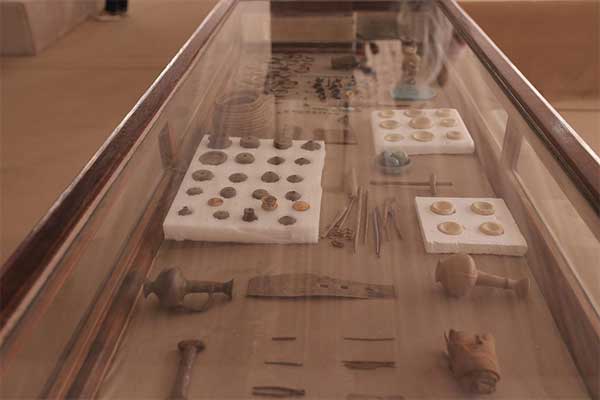
The other workshop, also rectangular in shape, was constructed with mud walls and stone floors. It consisted of several rooms where a collection of clay pots and animal burials were unearthed. Bronze tools used in the mummification process were also found. The workshop contained five stone beds, distinct from those discovered in the human embalming workshop.
"According to initial studies, it is believed that this particular workshop was used for the mummification of sacred animals," Waziri said.
According to Sabri Farag, the general director of the Saqqara archaeological site, the first tomb that was uncovered belongs to a prominent official named Ne Hesut Ba from the Old Kingdom’s Fifth Dynasty, dating to around 2400 BC. Ne Hesut Ba held the esteemed positions of head of scribes and priest of Horus and Maat.
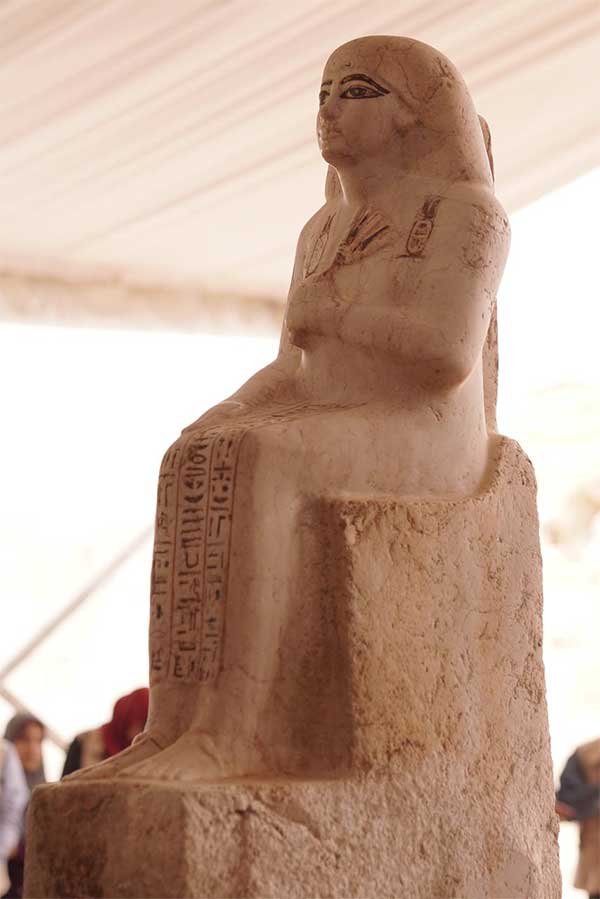
Mohamed Youssef, the director of the Saqqara site, described the Old Kingdom tomb as a mastaba structure (a flat-roofed structure) with a painted stone facade. The names of the deceased and his wife are inscribed on the facade, along with hieroglyphic texts depicting their various titles. The walls of the tomb depict scenes of daily life, cultivation, hunting and offerings.
The second tomb belongs to a Qadish Priest named Men Kheber from the New Kingdom’s 18th Dynasty, dating to around 1400 BC.
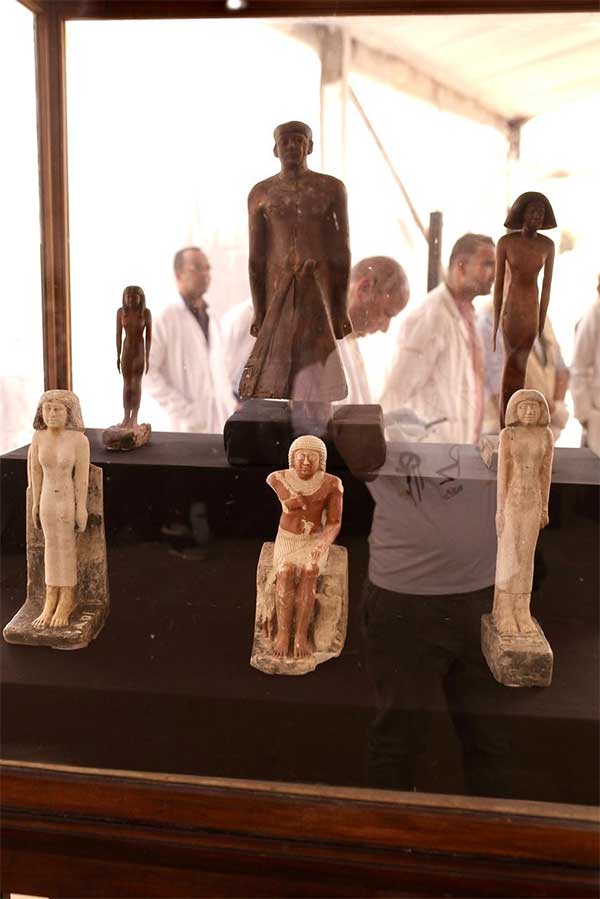
The tomb is cut from the rock with a decorated door and lintel bearing the names of the deceased and his wife. The tomb is decorated with scenes showing the deceased in different positions before offering tables. The interior of the tomb contained a one metre alabaster statue of the tomb's owner. The statue portrays the deceased wearing a long dress and a wig, holding a lotus flower in one hand. The statue is adorned with hieroglyphic text written in blue.
Among the other findings was a collection of wooden statues depicting a man named Nesu Henu and his wife from the Fifth Dynasty, as well as an anthropoid painted coffin from the third intermediate period.

A collection of ushabti figurines was also unearthed.
During a press conference held on Saturday at the Bubastian necropolis in Saqqara, Minister of Tourism and Antiquities Ahmed Issa highlighted the importance of the site, which houses the famous Step Pyramid of Djoser and numerous pyramids of kings and queens.
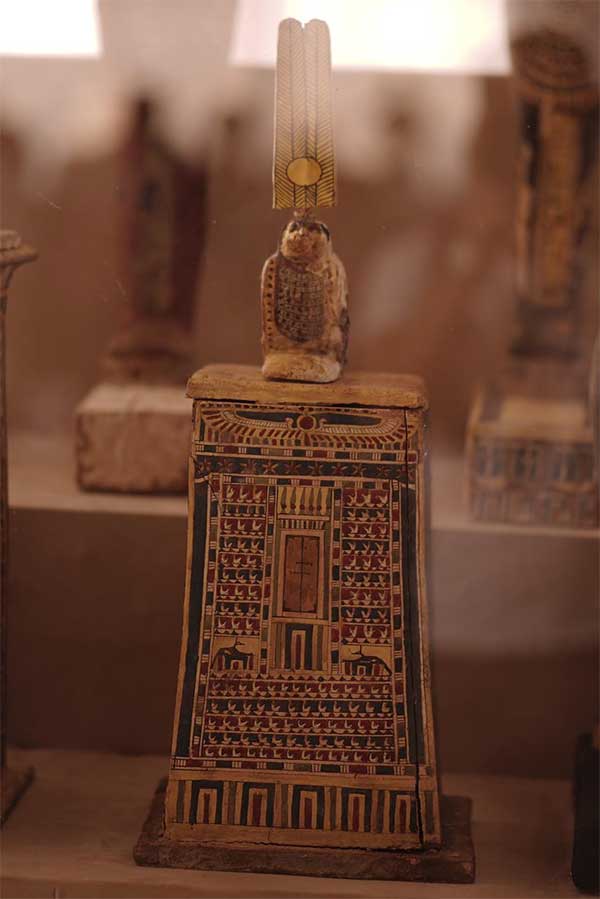
He emphasized the work carried out to develop the area as a unique tourist destination, aligns with Egypt's National Tourism Strategy. The strategy aims to increase tourism to the country by 25 to 30 percent per year, he said.
The minister expressed gratitude to the excavation mission and the Supreme Council of Antiquities for their dedicated work in preserving Egypt's heritage.
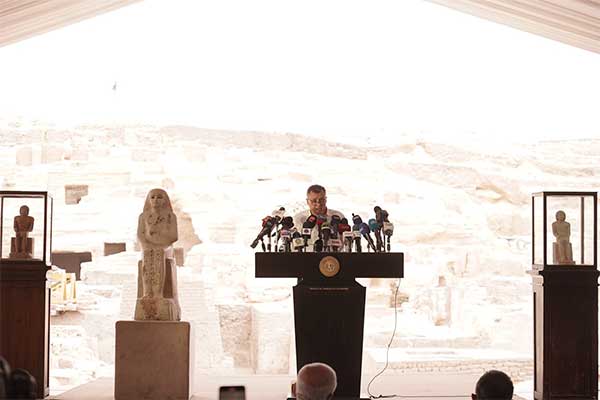
“I witnessed their hard work during my visit last month to the necropolis of the sacred animals (Bubastian) to check upon the work being achieved and met the working members of the mission who revealed this new discovery.”
“They are also responsible of discovering so much more, continuing to make headlines in local and international news over the past years. This has helped promote Egypt and one of its incredible tourist destinations.”
“I assure you that Egypt, especially the archaeological site of Saqqara, has not yet revealed all its secrets and there are many more to come,” Issa asserted.
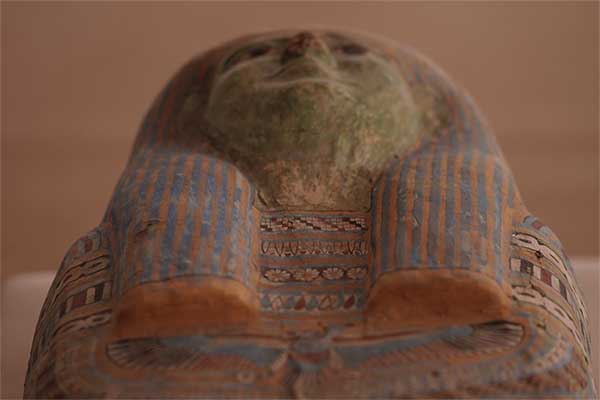
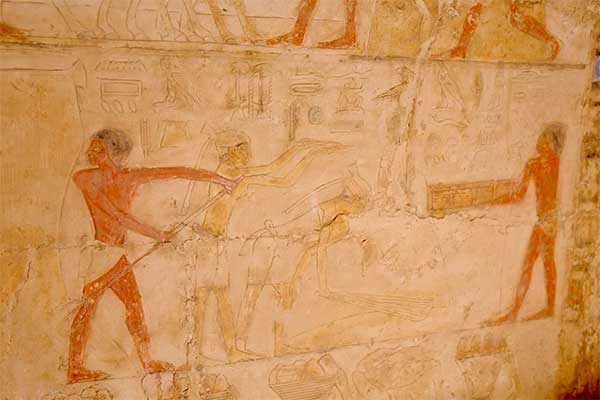
Short link:
Egyptian antiquities officials on Saturday revealed that a research team had unearthed human and animal mummification workshops, as well as two tombs in the ancient burial ground of Saqqara.
The discovery follows an excavation lasting about a year near the sanctuary of the goddess Bastet and catacombs of mummified cats in Saqqara, some 30 kilometers (18.5 miles) south of Cairo.
The embalming workshops, one in which humans were mummified with the other used for animals, date back to ancient Egypt's 30th dynasty — which reigned about 2,400 years ago.
Egypt's Tourism and Antiquities Ministry said that, in one of the workshops, the researchers had "found several rooms equipped with stony beds where the deceased lay down for mummification."
At the end of each bed were gutters that appeared to be needed for the mummification process.
There was also a collection of clay pots nearby to hold entrails and organs, and an assembly of other instruments and ritual vessels.
An initial study of the second workshop suggested that it was used to mummify sacred animals.
Also part of the discovery were the tombs of two priests, one dating back to the 24th century BC and the other to the 14th century BC.
The earliest belonged to Ne Hesut Ba, who was the head of scribes and priest of the gods Horus and Maat in the Old Kingdom's fifth dynasty.
Mohamed Youssef, director of the Saqqara archaeological site, said the tomb walls were decorated with depictions of "daily life, agriculture and hunting scenes."
The second tomb was carved in rock and features depictions of the deceased himself, a New Kingdom priest named Men Kheber, "in different positions."
It also contained a 1-meter (roughly 1-yard) alabaster statue.
Egypt's government has strongly promoted new archaeological finds to international media and diplomats in recent years in the hope that such discoveries will help attract more tourists to the country.
Cairo aims to revive an industry that suffered from political turmoil and that was battered by the pandemic and fallout from the conflict in Ukraine.
Economic data showed tourism revenues climbing to $7.3 billion in the second half of 2022, a 25.7% increase compared with the previous year.
rc/msh (AFP, AP)

By Hatem Maher
SAQQARA, Egypt (Reuters) - Egypt unearthed human and animal mummification workshops as well as two tombs in the ancient burial ground of Saqqara, officials said on Saturday, marking the latest in a string of discoveries that the country hopes can help revive its vital tourism industry.
Mostafa Waziri, the head of Egypt's Supreme Council of Antiquities, told reporters that the two large "embalming workshops" date back to the 30th dynasty (380-343 BC) and the Ptolemaic (305-30 BC) eras.
The discovery was made after a year-long excavation near the sanctuary of the goddess Bastet, which is home to the catacombs of mummified cats in Saqqara, some 30 kilometres (18.6 miles)south of Cairo.
It was the same spot where hundreds of mummified animals and statues were uncovered in 2019.
"We found embalming workshops, one for humans and one for animals. We found all the tools that they used (in mummification) in ancient times," Waziri said.
Both workshops featured stone beds, clay pots, ritual vessels, natron salt, which is one of the main ingredients for mummification, and linens among other mummification instruments.
The Saqqara excavations also led to the unearthing of two small 4,400 and 3,400-year-old tombs nearby, belonging to two priests, Ne Hesut Ba of the Old Kingdom's fifth dynasty and Men Kheber of the late kingdom's 18th dynasty respectively.
Inscriptions of cultivation, hunting and other daily activities were found on the walls of Ne Hesut Ba's tomb while "scenes showing the deceased in different positions" were engraved in Men Kheber's tomb, officials said.
Egypt has carried out extensive digging operations in Saqqara and other ancient locations in recent years, which resulted in a number of high-profile discoveries.
The country plans to inaugurate the Grand Egyptian Museum, a state-of-the-art facility near the Giza Pyramids on the outskirts of Cairo, after construction is completed later this year.
Egypt hopes it can further lure back tourists after the industry started to rebound of late, having been battered by the aftermath of the COVID-19 pandemic and the conflict in Ukraine.
Tourism revenues climbed to $7.3 billion in the second half of 2022, a 25.7% increase compared with the same period a year earlier, according to recently released central bank data.
(Reporting and writing by Hatem Maher; editing by Clelia Oziel)

KIRKSVILLE, Mo. — Rumors that the sheltered workshop in Kirksville is closing may become a reality if current financial circumstances don't improve soon.
That message coming from the board that oversees the organization.
The Frederick Rollins Sheltered Workshop, now known as Community Opportunities Inc., on South Osteopathy Street, has been around for 54 years.
It provides a safe working environment and meaningful employment for many individuals with developmental disabilities.
Right now, 47 disabled men and women, are employed by the workshop.
A number of issues are playing into the uncertain future of the organization.
The board said in a statement on Friday that the extremely important SB40 grant funds have apparently come to an end.
Officials say the SB40 Board has determined that Community Opportunities Inc. does not meet the requirements to receive the benefits of SB40 tax funds.
The Community Opportunities Board also said uncontrollable inflation, instability in service market prices and business fallout from the COVID-19 pandemic have contributed to the drying up of financial resources.
The board said it is diligently working to maintain employment services for the sheltered workshop's disabled workers.
Members encourage the public to support the sheltered workshop by dropping off their recyclables, scheduling a car-detailing session or using other services offered and by making monetary donations to the 501 (c)(3) workshop.
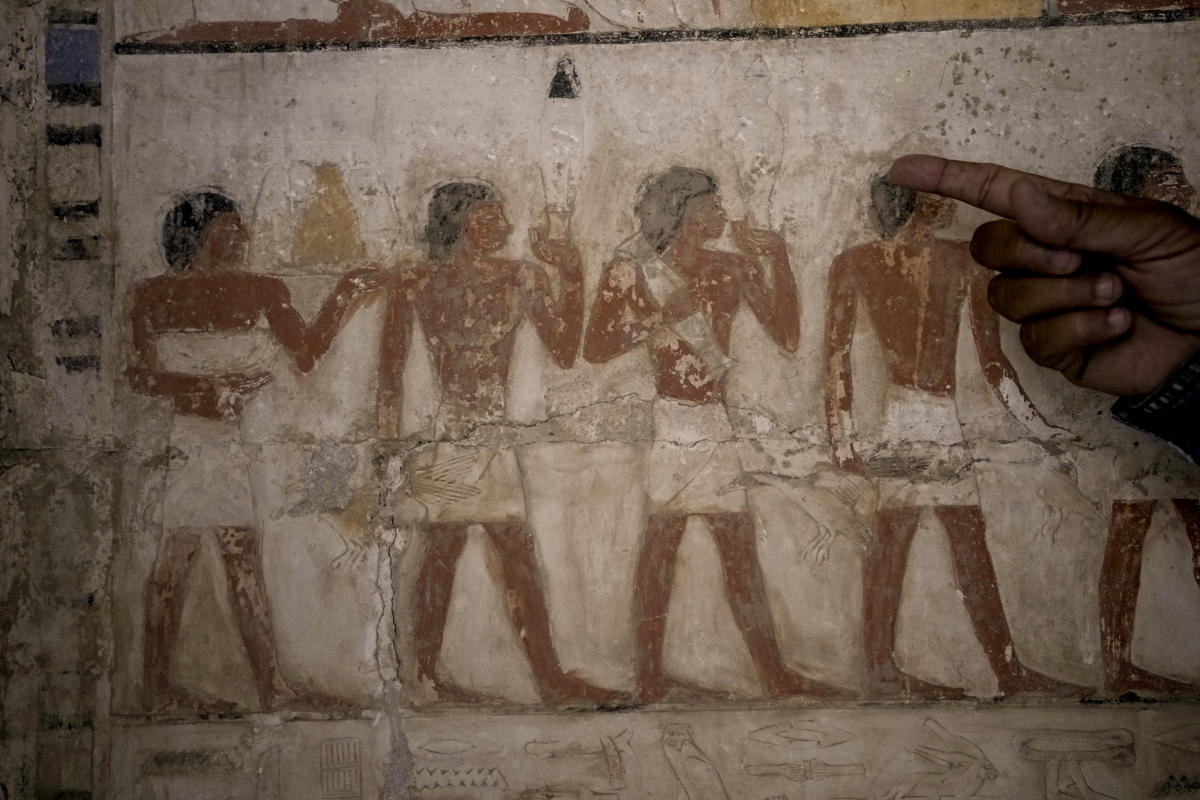
CAIRO (AP) — Egyptian antiquities authorities Saturday unveiled ancient workshops and tombs they say were discovered recently at a Pharaonic necropolis just outside the capital Cairo.
The spaces were found in the sprawling necropolis of Saqqara, which is a part of Egypt’s ancient capital of Memphis, a UNESCO World Heritage site.
Mostafa Waziri, secretary-general of the Supreme Council of Antiquities, said the workshops had been used to mummify humans and sacred animals. They date back to the 30th Pharaonic Dynasty (380 BC to 343 BC) and Ptolemaic period (305 BC to 30 BC), he said.
Inside the workshops, archaeologists found clay pots and other items apparently used in mummification, as well as ritual vessels, Waziri said.
The tombs, meanwhile, were for a top official from the Old Kingdom of ancient Egypt, and a priest from the New Kingdom, according to Sabri Farag, head of the Saqqara archaeological site.
In recent years, Egypt’s government has heavily promoted new archaeological finds to international media and diplomats. It hopes that such discoveries will help attract more tourists to the country to revive an industry that suffered from political turmoil following the 2011 uprising.
Where's Marty? In an East Baltimore workshop where the Kotaigrill is made
Hi Everyone!
So I get this rather cocky idea last week. We were looking for a good pre Memorial Day weekend "WM?" and I start thinking about grilling. (A totally random thought to be honest.) Ok, that is a good subject on the surface. Easy to get on the air too. We simply call a big box store, show up, and ask the obvious question, "Gonna sell a lot of these suckers this weekend are ya?"
But in my world, that is not good TV. It is too generic in my mind. Anybody with a microphone and a camera can do that. For you, we need to be better. So I said let's see if we can find someone locally who MAKES grills. Now that would be interesting. And after about 5 minutes on the Internet, we found Kotaigrill.
Started 10 years ago by a welder named Halsey Frost, (on the right in the picture below), Kotaigrills are all hand made by Halsey and his one employee, Dylan (on the left). And these days this line of Habachi Grillls, and hand made accessories, have been shipped to many states, Australia, Japan, and Europe. And that international shipping is not cheap! But that is how well liked this product is. (Austriallia has bought the bulk of the units. Gives new meaning to "Shrimp on the Barbie!" Literally!!

Expertly welded, built to outlast anything, and really functional, these wood or charcoal grills come in a lot of sizes. These guys can make 3-5 a week, and are back ordered. At the height of "the season," for a couple of weeks. Who knew, but now we all know. Grills made in Baltimore, and sold on the Web or ESTY are putting Charm City on another map in 2023. WILD!

And that is why we do not just go for the easy fix when booking a story. You deserve better. Finding that gem of a subject, and a good backstory, is what we are all about. Enjoy your long weekend and be safe! I am off tomorrow. See ya next week!

Marty B!
Thanks for reading CBS NEWS.
Create your free account or log in
for more features.

On June 1, NIST and OMB will host a workshop to discuss next steps for implementation of M-22-18, Enhancing the Security the Software Supply Chain through Secure Software Development Practices, the intended impact on the security of the Federal enterprise, CISA’s self-attestation common form, and the initial minimum requirements contained therein.
Attendees are encouraged to submit their questions in advance to ofcio [at] omb.eop.gov by May 26.
Please note that the recording for this workshop will NOT be posted after the event. Those who wish to participate are encouraged to join the live event.
Workshop Goals:
ROANOKE, Va. (WDBJ) - Huddle Up Moms, with the support of the Bridge Institute, is hosting a co-parenting workshop to help parents transiti...
